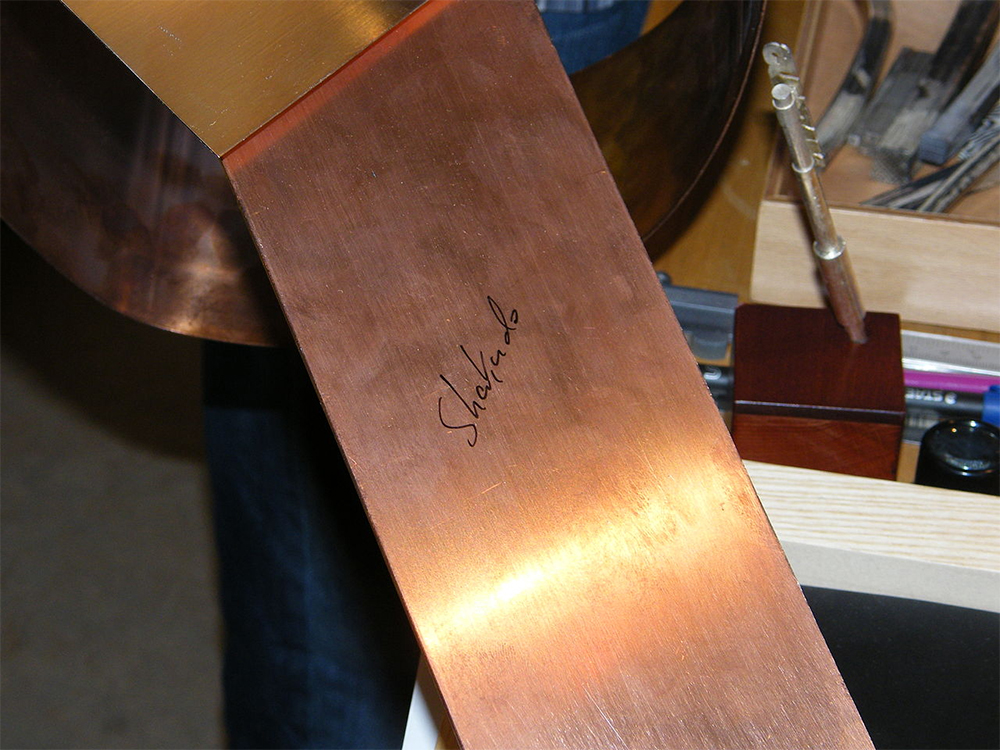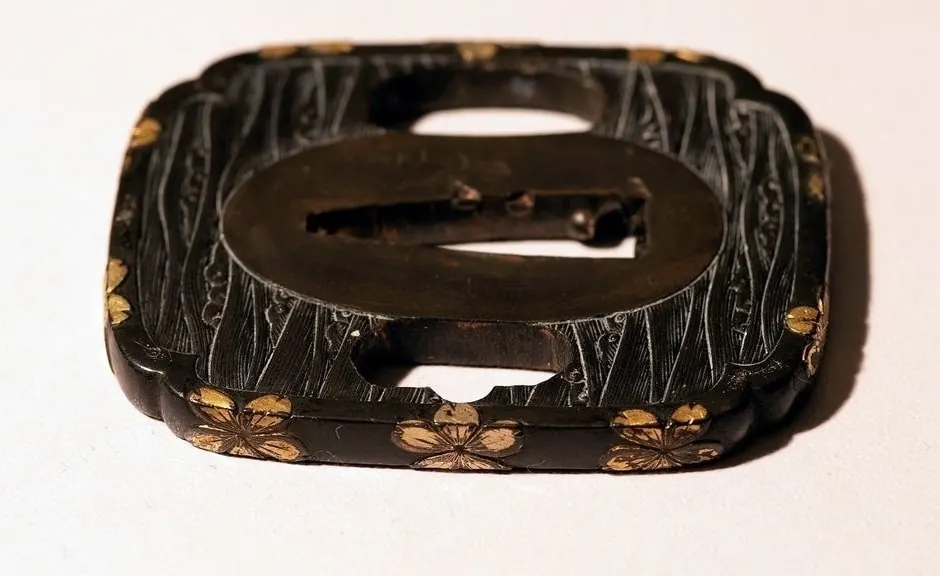SHAKUDŌ-a brilliant Japanese metal


You may encounter a special type of metal called shakudō. It has a light brass or bronze color and has become a popular metal used by Japanese jewelry craftsmen. However, before being used in jewelry, Shakudō was used to make high-quality traditional Japanese swords.
What is Shakudō?
As shown in the picture above, shakudō is a unique metal, similar to bronze and brass. In terms of composition, it consists of approximately 4% to 10% gold and 90% to 96% copper. Although most shakudō have this unique color, metal workers can use a special heating process called rokusho to create deeper tones.
The name "shakudō" is translated from Japanese and means "red and copper". Again, most shakudō have this characteristic color, but metal workers often use different techniques to achieve lighter or darker tones. The true defining feature of shakudō is its gold and copper components, which provide both beauty and strength.
Shakudō in Japanese traditional swords
Traditional Japanese swords produced during the country's feudal period are usually made of high-carbon steel. For example, the carbon content of Tamahagane steel is as high as 4.5%. Swordsmiths have found that adding carbon steel makes their blades stronger and more durable, prevents damage, and ultimately extends the life of the blades.
However, Japanese swordsmiths used other metals to make their swords, including shakudō. Shakudō is not used to make blades. Instead, it was used to make tsuba. This means that the swordsmith only needs a small amount of copper and gold. If the entire blade is made with a ruler, it will require a lot of resources to make it.

As you may already know, tsuba is the guard on many traditional Japanese swords. Usually round or square design, it can protect the hand of the samurai from accidental self-injury. Because it is not directly hit like a blade, swordsmen can use other metals to make tsuba. In addition to rulers, they often use iron, steel, brass, copper and various alloys to produce tsubas.
Today, shakudō is commonly used in Japanese jewelry, although some sword companies continue to use it to make their tsuba. Having said that, the high cost of gold limits its practicality in practical applications. Swordsmiths and jewelry artisans are now using cheaper metals in their respective crafts to save money.
Discover the many attractive options available for Katana swords and custom swords.
Want a unique sword? Feel free to contact us:
Phone: 086 13739276006
Email: [email protected]
Website: www.hanbonforge.com
Custom Sword Page: www.hanbonforge.com/CUSTOM-SWORDS/Custom-Your-Own-Swords

Leave a Comment